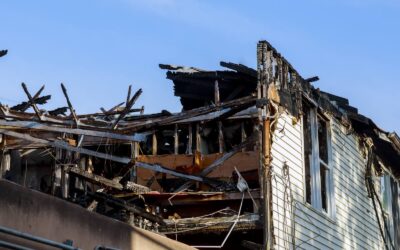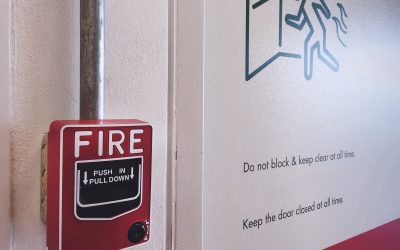Types Of Smoke Detectors
Smoke detectors are a brilliant invention and not many people actually know how they work. They all consist of a sensor (which is the component that senses or detects the smoke) and a loud electronic alarm that is triggered when the sensor detects smoke. The two most widely used smoke detectors are ionisation smoke alarms and photoelectric smoke alarms, or a combination of the two.
Ionisation Smoke Alarms
Ionisation smoke detectors contain a tiny amount of radioactive material that sits between two plates that are being electrically charged. This ionises the air, creating an ionisation chamber and stimulating a current to flow between the two plates. Smoke particles disrupt this flow of ions, so as soon as any disruption to this current occurs, the smoke alarm is activated to alert anyone within the dwelling. Ionisation smoke alarms generally respond better to small amounts of smoke produced by fast emerging fires and flames.
Photoelectric Smoke Alarms
Photoelectric smoke detectors function by positioning a source of light and a photoelectric sensor at 90 degree angles to each other. When the smoke detector is ‘at rest’, the light is aimed straight across to avoid the sensor. What triggers the alarm in a photoelectric smoke detector is when particles of smoke enter the chamber and scatter the light, causing it to reflect onto the sensor. Genius, right? Photoelectric smoke alarms are now the benchmark requirement in every home in Queensland as they respond extremely efficiently to smoky fires (those which begin with a long period of smoldering).
There are also combination smoke alarms available which incorporate both kinds of technology into a single unit. These are also suitable for compliance with QLD smoke alarm legislation.
How Do Interconnected Smoke Detectors Communicate?
As per the new QLD smoke alarm regulations that every property owner and landlord must comply with by 1 January 2022, smoke alarms within a single building must all be interconnected. This means that if a single smoke alarm detects smoke, every smoke alarm in the building is also triggered simultaneously. Even if the smoke is detected on the ground floor, the smoke alarms on the top floor will also sound. This new regulation will assist to alert everyone in the dwelling and allow more time to escape to safety.
This connection works by wiring the units to intercommunicate. Each smoke detector has a black wire, a white wire, and a red wire – the red wire facilitates the intercommunication. A licensed electrician is required to wire the smoke detectors correctly, running the red wire between all the smoke alarms. Usually a single red wire can connect up to 12 smoke alarms, making it an extremely effective system to protect people and their homes against fire emergencies.
Do Your Smoke Alarms Need To Be Updated To Ensure Compliance With QLD Smoke Alarm Legislation?
If your smoke detectors are older than 10 years or are not yet interconnected, you will need a new smoke alarm installation in order to comply with QLD smoke alarm legislation. Our team of qualified and fully licensed electricians and electrical contractors provide professional smoke alarm installation and maintenance services to ensure you comply. Give us a call today on 0477 257 599 for a free quote or contact us here.



